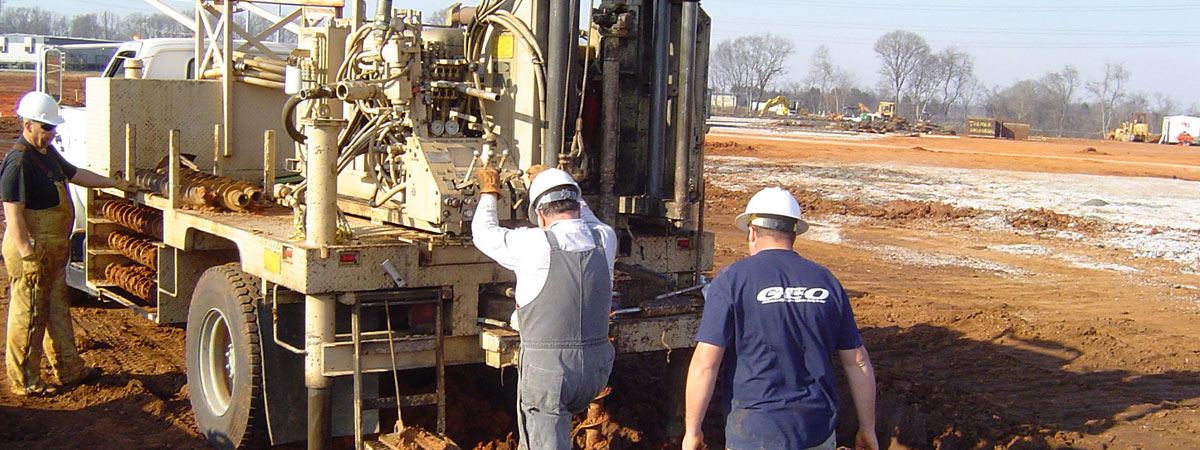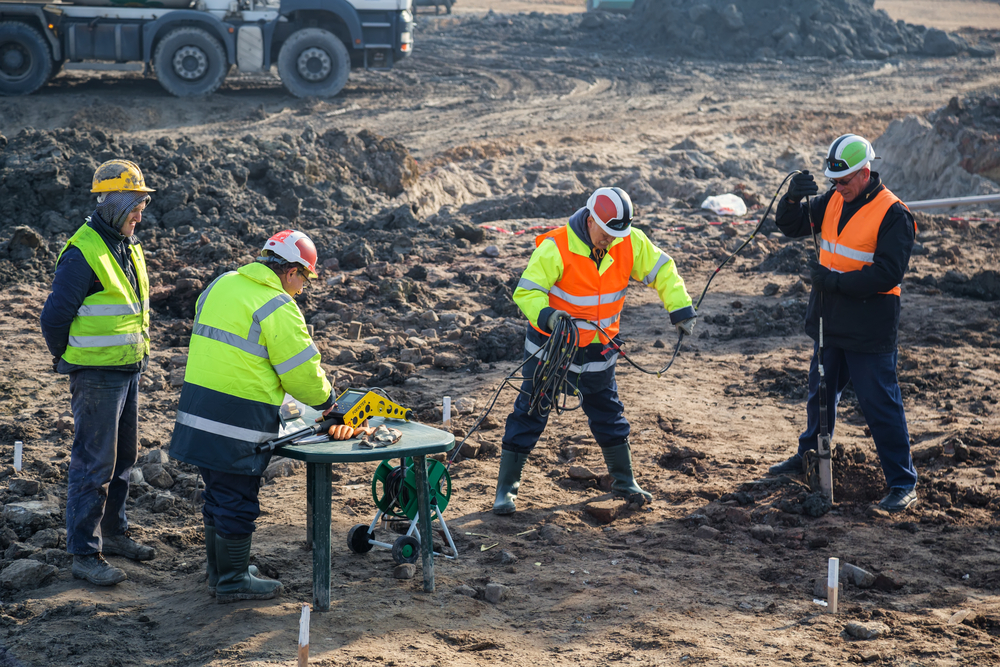Top Geotechnical Engineers for Cutting-Edge Dirt Evaluation and Foundation Design
Wiki Article
The Interdisciplinary Approaches in the Geotechnical Industry: Linking the Gap Between Engineering, Geology, and Environmental Scientific Research for Ideal Task Results
The combination of design, geology, and ecological science within the geotechnical sector is not just useful; it is necessary for attaining optimal project results. This interdisciplinary collaboration cultivates a detailed understanding of complex website problems, enabling ingenious services to arise. By examining vital functions and successful study, we can reveal the vibrant interplay that drives project success. However, obstacles continue to be in successfully managing these multidisciplinary efforts, questioning about future fads and possible improvements. What methods might arise to facilitate this essential collaboration and enhance the efficacy of geotechnical techniques?Relevance of Interdisciplinary Collaboration
The relevance of interdisciplinary collaboration in the geotechnical sector can not be overstated. Reliable geotechnical tasks need the assimilation of varied expertise from various areas, consisting of design, geology, and environmental science. This collaboration makes sure that all facets of a task are thought about, resulting in comprehensive remedies that deal with complicated difficulties.When working in seclusion,Interdisciplinary cooperation promotes advancement by making it possible for experts to share insights and techniques that may not be obvious. By leveraging the toughness of numerous self-controls, teams can identify possible risks, optimize style procedures, and enhance the sustainability of geotechnical projects. In addition, such cooperation promotes a holistic understanding of site-specific problems, which is important for accurate analysis and decision-making.
The complexity of geotechnical jobs necessitates a collaborated technique to problem-solving. When designers, geologists, and environmental researchers interact, they can develop a cohesive approach that straightens technological requirements with ecological considerations and regulatory compliance. This synergy not only boosts task results yet likewise adds to the lasting strength of facilities. Inevitably, interdisciplinary partnership is important for progressing ideal practices and achieving quality in the geotechnical industry.
Secret Roles of Each Technique
Collaboration among various self-controls is not simply beneficial; it is crucial for the successful implementation of geotechnical jobs. Each technique-- design, geology, and ecological scientific research-- plays a distinct yet interconnected role that adds to predict efficiency and sustainability.Geotechnical designers are mainly in charge of creating foundations and guaranteeing structural honesty. They assess dirt and rock properties to assess load-bearing capacities, supplying vital data for risk-free building practices. Their know-how enables the formulation of cutting-edge options to complicated challenges.

Ecological scientists examine the potential effects of building on communities and water sources. They perform ecological analyses and create reduction methods to minimize damaging effects. By integrating environmental considerations, they guarantee compliance with guidelines and advertise sustainability throughout the project lifecycle.
Study of Effective Combination
Effective combination of geotechnical self-controls can be exemplified through various case researches that highlight the efficiency of synergy in addressing complicated design obstacles. One remarkable instance is the building and construction of the Hong Kong-- Zhuhai-- Macau Bridge, where a joint technique including geotechnical engineering, geology, and environmental scientific research was crucial. Engineers and rock hounds functioned in unison to examine the seabed conditions and optimize the structure style, making sure stability and decreasing environmental effect.An additional impactful situation is the renovation of slope security in the San Francisco Bay Area, where an interdisciplinary group incorporated geotechnical evaluation with ecological assessments. By incorporating hydrological researches and geological surveys, the group properly determined potential landslide threats and carried out efficient reduction actions, boosting security and sustainability.
In addition, the redevelopment of Brownfield websites frequently needs a multidisciplinary strategy. In one instance in Chicago, collaboration among geotechnical engineers, ecological researchers, and urban planners caused the successful remediation of infected soil, permitting the secure change of the website right into a neighborhood park. These instance research studies highlight that interdisciplinary cooperation not just addresses technical difficulties but likewise cultivates ingenious solutions that profit both projects and areas.
Obstacles in Multidisciplinary Projects

Moreover, working with schedules and process amongst numerous teams can be bothersome, especially when each discipline has unique task turning points and deliverables. This misalignment can lead to delays and raised costs. The challenge of source allowance additionally impends huge; making certain that specialized expertise is available at vital junctures requires careful planning and insight.
Finally, regulatory compliance positions one more substantial obstacle. Each discipline may face different governing frameworks, and aligning these demands to fulfill job objectives can be intricate and time-consuming. Dealing with these challenges necessitates solid leadership and reliable interaction strategies to promote partnership and make sure that multidisciplinary teams work cohesively in the direction of shared goals.
Future Trends in Geotechnical Practices
As the geotechnical market advances, emerging patterns are improving practices to attend to the challenges encountered in multidisciplinary projects - geo tech engineer. One considerable trend is the enhanced assimilation of innovative modern technologies, such as expert system and equipment knowing, right into geotechnical analysis and style. These innovations enhance anticipating modeling and danger evaluation, making it possible for engineers to make more educated decisions throughout the job lifecycle
In addition, the fostering of digital twins and real-time tracking systems is coming to be more prevalent. These tools promote continuous analysis of soil problems and structural efficiency, enabling prompt treatments when concerns occur.
Final Thought
Finally, the assimilation of design, geology, and environmental science is important for accomplishing optimal outcomes in the geotechnical market. Interdisciplinary collaboration cultivates technology, boosts analytical capabilities, and aligns technical demands with environmental sustainability. Effective situation studies illustrate the benefits of this method, while acknowledging the challenges faced in multidisciplinary jobs. Looking ahead, accepting these joint practices will certainly be essential for navigating future patterns and progressing the area of geotechnical engineering.The integration of engineering, geology, and ecological scientific research within the geotechnical sector is not merely beneficial; it is crucial for achieving optimal job outcomes. Effective geotechnical tasks require the combination of varied experience from numerous fields, consisting of engineering, geology, and ecological science.Browsing the complexities of multidisciplinary jobs in the geotechnical sector provides numerous substantial difficulties.As the geotechnical industry evolves, emerging fads are reshaping techniques to attend to the challenges encountered in multidisciplinary tasks. Geotechnical engineers are significantly teaming up with environmental scientists to make sure that jobs align with sustainability objectives and comply with regulatory requirements.
Report this wiki page